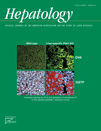Drug-induced autoimmune hepatitis caused by anti–tumor necrosis factor α agents†
Potential conflict of interest: Nothing to report.
We read with great interest the report by Björnsson et al.1 regarding the clinical characteristics and prognosis of patients with drug-induced autoimmune hepatitis (DIAIH). In their study, the authors described 24 patients with DIAIH resulting from nitrofurantoin and minocycline use.
Tumor necrosis factor α (TNF-α) blocking agents are drugs commonly used in the treatment of rheumatological, dermatological, and gastroenterological autoimmune diseases. Minor abnormalities in liver function tests are relatively common with the use of anti–TNF-α agents, but the development of serious hepatic failure and the reactivation of viral hepatitis might be possible as well. Autoimmune hepatitis (AIH) is a rare but increasingly reported complication with the use of anti–TNF-α agents. To the best of our knowledge, 11 cases of AIH due to anti–TNF-α agents were reported between 2001 and 2010, and all these patients showed serological findings of type 1 AIH.2-12 The induction of ANA and the elevation of serum immunoglobulin G levels, which are diagnostic criteria for AIH, have been reported in patients treated with anti–TNF-α therapy for spondylarthropathy, rheumatoid arthritis, and psoriasis.13, 14 For these reasons, reliance on only serological and laboratory findings may lead to diagnostic confusion. Moreover, after a careful review of the literature, we noticed that none of the patients with AIH induced by anti–TNF-α agents had histologically proven cirrhosis or advanced fibrosis at presentation, and all of them responded well to immunosuppressive treatment. Therefore, these findings suggest that the prognosis of DIAIH is favorable, regardless of the underlying, offending drugs.
In conclusion, DIAIH is a rare entity, and only a few drugs have been reported as offending agents. We think that anti–TNF-α agents, in addition to well-known drugs, should be considered noxious agents in the differential diagnosis of DIAIH. Moreover, anti–TNF-α agents share some similarities with nitrofurantoin and minocycline with respect to AIH. All these drugs show the same histological findings, and their clinical characteristics with respect to therapeutic outcomes are nearly identical. However, anti–TNF-α agents have many hepatic side effects such as drug-induced hepatitis, reactivation of hepatitis B or C, and fulminant hepatic failure, which may require orthotopic liver transplantation. Therefore, we think that liver enzyme abnormalities should be carefully evaluated in patients who are receiving anti–TNF-α agent therapy. After the exclusion of other possible side effects of anti–TNF-α agents, biopsy findings specific to AIH and a good response to immunosuppressive therapy are essential parts of the diagnosis of AIH induced by anti–TNF-α agents.
References
Cumali Efe M.D.*, Tugrul Purnak M.D. , Ersan Ozaslan M.D. , Staffan Wahlin M.D. , * Department of Internal Medicine, Ankara Numune Research and Education Hospital, Ankara, Turkey, Department of Gastroenterology, Ankara Numune Research and Education Hospital, Ankara, Turkey, Department of Gastroenterology and Hepatology, Karolinska Institutet, Karolinska University Hospital, Stockholm, Sweden.




